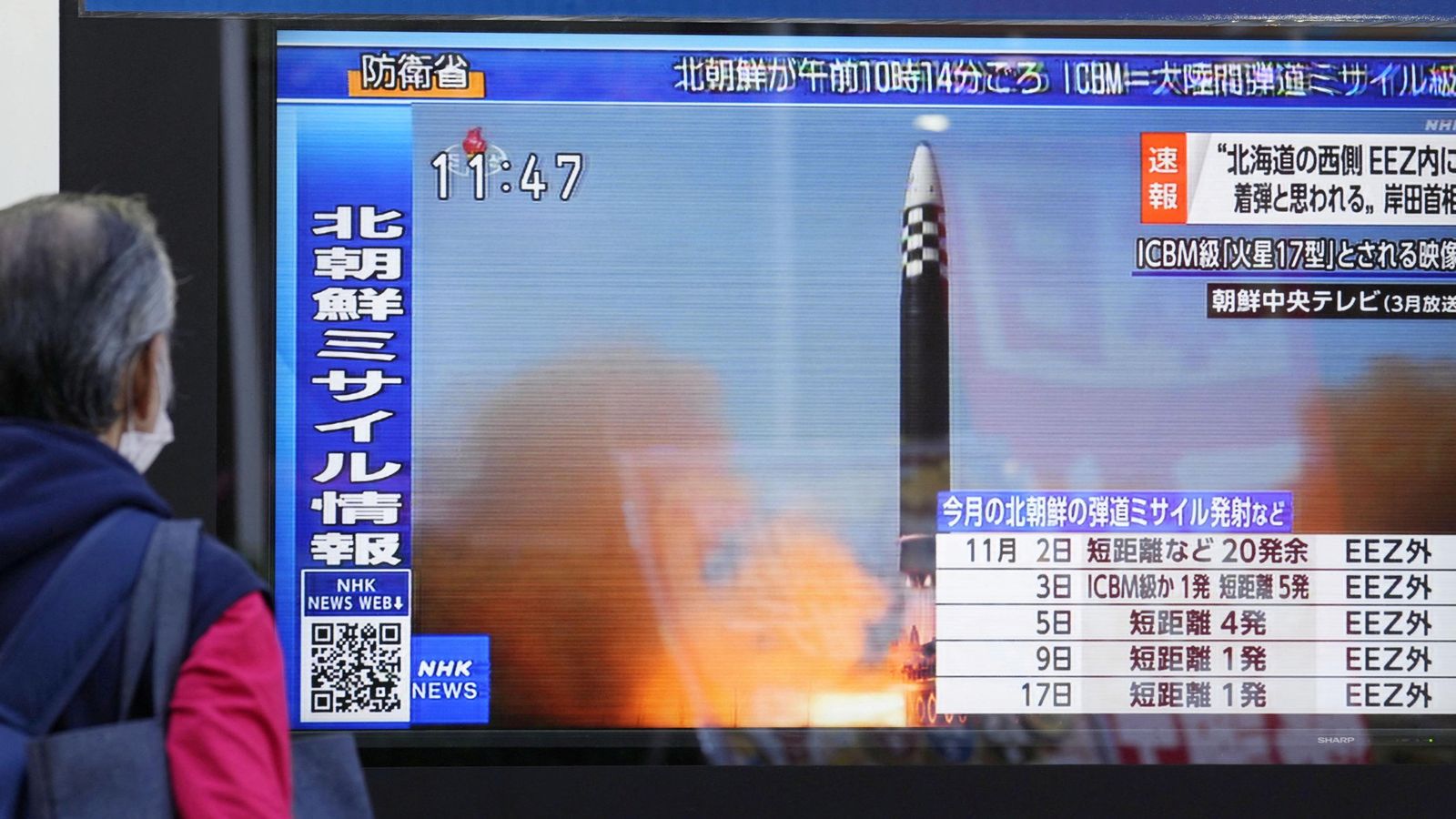North Korea has fired an intercontinental ballistic missile that Japanese officials said had sufficient range to strike the entire United States mainland.
The launch was reported by both South Korean and Japanese officials after the rocket landed 200km (124 miles) off the coast of Japan on Friday.
It was fired a day after North Korea conducted a smaller missile launch as it warned of “fiercer military responses” to US plans to boost its security presence in the region, saying Washington is taking a “gamble it will regret”.
US Vice President Kamala Harris convened an emergency meeting during the Asia-Pacific Economic Cooperation (APEC) summit in Thailand with leaders from Australia, Japan, South Korea, Canada and New Zealand after the latest missile test on Friday.
“We strongly condemn these actions and we again call for North Korea to stop further unlawful, destabilising acts,” she said.
“On behalf of the United States, I reaffirm our ironclad commitment to our Indo-Pacific alliances. Together the countries represented here will continue to urge North Korea to commit to serious and sustained diplomacy.”
The US and South Korea held joint air force drills using F-35A fighters in response to Friday’s missile test, South Korea’s defence ministry said.
North Korea warns of ‘fiercer military responses’ after firing ballistic missile towards South Korea’s eastern waters
South Korea’s former president to give up dogs gifted by Kim Jong Un in row over cash
South Korea scrambles fighter jets after detecting 180 North Korean warplanes near border
Missile could hit entire US mainland
South Korea’s Joint Chiefs of Staff said it detected the intercontinental ballistic missile (ICBM) launch from North Korea’s capital region around 10.15am and the weapon flew across the country and towards the North’s eastern coast.
Japan said it appeared to have flown on a high trajectory and landed west of the Japanese island of Hokkaido.
South Korean and Japanese estimates said the missile flew around 6,000-6,100km (3,600-3,790 miles) at a maximum altitude of 1,00km (620 miles).
Japanese Defence Minister Yasukazu Hamada told reporters the altitude suggests the missile was launched on a high angle and depending on the weight of a warhead the weapon has a range exceeding 15,000km (9,320 miles), “in which case it could cover the entire mainland United States”.
It was North Korea’s eighth ICBM test in 2022, according to the US State Department.
The launch adds to a record-breaking year for North Korea’s missile programme, after it resumed testing ICBMs for the first time since 2017 and broke its self-imposed moratorium on long-range launches as denuclearisation talks stalled.
Meanwhile, Japanese Prime Minister Fumio Kishida has warned of further missile launches by North Korea and a possible nuclear test.







